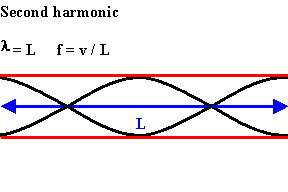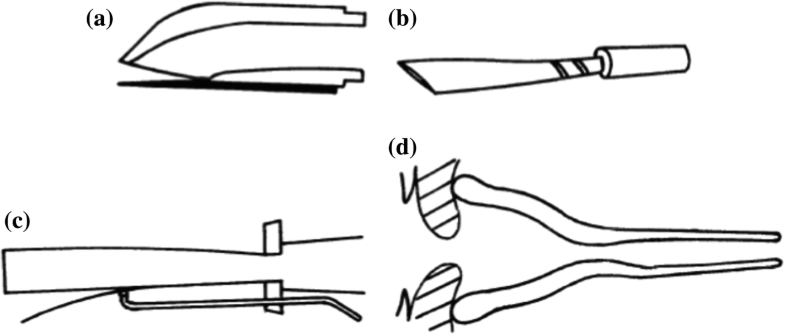

Tone hole chimneys 11B project from the outer surface of the tubular body 10a, and define the peripheries of the tone holes 11A. Once the air in the flute is vibrating, some of the energy is radiated as sound out of the end and any open holes. The tone holes 11A are not equal in diameter, but have appropriate values of diameter to produce tones at predetermined pitch. In the flute, the air jet, in cooperation with the resonances in the air in the instrument, produces an oscillating component of the flow. A tone hole is, 'in wind instruments, a hole that may be stopped by the finger, or a key, to change the pitch of the tone produced.' The resonant frequencies of the air column in a pipe are inversely proportional to the pipes effective length. The flutist blows a rapid jet of air across the embouchure hole. Tone holes may serve specific purposes, such as a trill hole or register hole. This excites the air contained in the usually cylindrical resonant cavity within the flute. The airstream creates a Bernoulli or siphon. Upper and middle-range pitches of the Ophicleide can be obtained only through the left hand. Generally, the player can obtain the partial pitches for a given air column length. This results in a pitch lowered by one-half step. Where does sound come out of flute?Ī flute produces sound when a stream of air directed across a hole in the instrument creates a vibration of air at the hole. If the performer presses the lever for this normally open tone hole, the hole will close, and the longer air column extends past this hole up to the instrument’s bell.

If the length is too great, too much surplus air is drawn into the instrument which is amplified by the sound chamber. Why does my Native American flute sound airy?Īnswer: There are a few reasons why a flute will sound airy or breathy when it is played but the most common one is due to an inappropriate size and/or shape of the True Sound Hole (embouchure). The flutist uses tone holes and keys to shorten the vibrating air column, thus producing an increase in pitch. Sound is produced on the flute by blowing: the flutist blows through the mouth hole (embouchure hole) and the stream of air that makes contact with the edge is cyclically directed outward and inward. Also, trying varying the shape and pressure of your blowing, and how far your bottom lip extends over the hole. One can shorten the air column by opening the holes, which is pretty straightforward for the 'open fingerings' (the ones with an unbroken line of upper holes closed and lower holes open). An axial hole for air column vibration is formed through the tubular body in communication with surrounding air via radial tone holes formed at prescribed positions along the length of the tubular body and tone generation via each tone hole is controlled by an associated key mechanism arranged on the tubular body. Rotate the flute to change the angle at which your breath hits the blowing edge. The frequency of the basic sound wave is reversely proportional to the effective length of the air column. If your blowing produces no sound, check your bottom lip to make sure you’re not unconsciously pulling it up. Why does my Native American flute sound airy?.


 0 kommentar(er)
0 kommentar(er)
